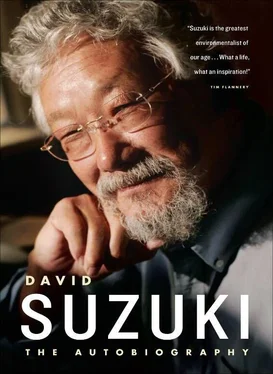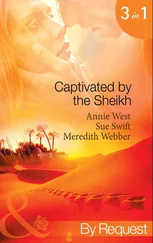Premier Bennett still resisted the team's recommendation because of immense pressure from logging interests. He did what politicians often do in such circumstances — he punted, setting up yet another group, the Wilderness Advisory Committee, headed by the respected lawyer Bryan Williams. But so many battles over logging had broken out all over the province that the committee was charged with examining sixteen contentious areas and coming up with decisions on all of them in three months! After years of deliberation and no decisions about Haida Gwaii, Bennett set a ludicrously short time to decide on all these areas. Environmentalists immediately pointed out there wasn't enough time to perform the job responsibly, adding that the committee's membership was too heavily weighted toward the logging industry.
By then I was fully engaged in the battle over Windy Bay, and I made a submission to the Wilderness Advisory Committee. The body included Les Reed, a forest economist who occupied a chair at the University of British Columbia funded by the forest industry. He once boasted that in contrast to people like me, he did not have tenure; I don't know what he was trying to imply, because tenure is a privilege conferred on academics to free them to speak out on issues about which they are knowledgeable, without fear of reprisal. In contrast, Reed was completely dependent on the forest industry for his continued support — like someone who works for the tobacco or nuclear industry, he was too dependent on vested interests to be credible.
At one point during my submission to the committee, I mentioned that I had just driven through forests in France while filming and had noticed the roadkill — animals killed by motor vehicles. Before I could finish my sentence, Reed interrupted me to blurt out, “We have lots of roadkill in B.C. too.” I responded that the point I was making was that in France I hadn't seen any roadkill. Instead, I saw a lot of tree plantations of the kind the forest industry wanted to substitute for old-growth forests, but judging by the lack of roadkill in France, there was little wildlife in them compared with our forests — as Reed had pointed out. The audience hooted its delight as Reed scowled at me.
The really hot area examined by Williams's committee was Windy Bay. In the end, the committee came through, recommending that 363,000 acres, including Windy Bay, be set aside as parkland. Response from the forest industry was furious, as well-known radio talk show host Jack Webster took on the issue and attacked environmentalists (it was revealed later that he was a shareholder in one of the companies logging the area). In the heat of the controversy, I was invited to debate the issue on Webster's show. I was very nervous, because I was a latecomer to the controversy and didn't know all the details, as others who had been involved for years did.
To my surprise, when I arrived at the studio, I could see immediately that Jack was equally scared of me. No doubt he too felt insecure about his facts. Once he opened his show, he was very polite and respectful as we sparred over the issue. Finally I said, “Jack, it's disgraceful how little land we set aside to protect. Do you know how much we protect on the coast?” Now, in a way I was bluffing — I had heard Thom Henley quote a number that was very small but had not seen the evidence for myself. If Jack had answered, “No, I don't. How much do we protect?” I would have had to sound foolish by replying, “I don't know either, but it isn't very much.” To my relief, he began to stutter, then paused and finally said, “Well, I have to admit I don't know,” and he lobbed me an easy question on a different subject. He was as shaky on the land issue as I was at that moment.
Bennett was still under too much pressure from the forest industry and loggers to be able to accept the Williams recommendation. Even though a mere sixty to seventy logging jobs were at risk if the area were set aside as a park, the industry held the rest of the province to ransom, railing against the “greedy” environmentalists who cared more about trees than people. I heard of a public meeting that was held in Sandspit, the community where most of the men logging South Moresby lived. Debate was heated as loggers demanded their right to make a living on Haida Gwaii like anyone else. At that point, a Haida elder stood up and asked how many loggers were buried in Haida Gwaii. After a long pause, the answer came back: “None.” The elder responded that her people had lived there for thousands of years and their bones could be found throughout the islands.
At last, in 1987, new premier Bill Vander Zalm decided to include the disputed land in a park to be jointly administered by Parks Canada and the Haida people and known as Gwaii Haanas National Park Reserve and Haida Heritage Site. It was a massive area of almost six hundred square miles, representing 15 percent of the islands of Haida Gwaii.
Vander Zalm had been vacillating back and forth, leaving environmentalists whipsawed between the excitement of potential victory and despair at the possibility of losing. He was in direct phone contact with Prime Minister Brian Mulroney as they debated the amount of money the feds would kick in. I was in Russia filming, and it seemed that each time I called Tara, a different outcome was imminent. I was writing a weekly column for the Globe and Mail newspaper in Toronto at the time and had to go through all kinds of machinations to send the columns from different parts of the Soviet Union. I was filming along Lake Baikal in Siberia when the decision was finally made, but I had written two columns — one congratulating politicians for the wisdom of their decision, the other decrying their cowardice in making the wrong choice.
Frank Beban, the owner of the company that was doing the logging, ordered his men to cut on Lyell Island around the clock, dropping the trees as fast as possible and just leaving them on the ground until the deadline in July when all logging had to stop. Then they could haul them out more leisurely. I flew over Lyell Island with Tara, and her eyes filled with tears at the sight of the trees lying crisscrossed on the ground, the wanton destruction a last-gasp thumbing of the nose at all the “preservationists.”
I was invited to the provincial government buildings in Victoria for the July 1987 signing of the agreement between B.C. and Canada that would help to create Gwaii Haanas National Park Reserve. It was a rare moment when environmentalists could celebrate a victory and rub shoulders with politicians. Tara had already flown to Haida Gwaii, where a great feast was being prepared in Skidegate to welcome home Lootaas (“Wave Eater”), the fifty-foot dugout canoe carved there for Expo 86 under the supervision of the Haida carver Bill Reid. In Victoria, Premier Vander Zalm signed along with Prime Minister Mulroney. Afterward, Elizabeth May, who was a special assistant to federal environment minister Tom McMillan, was given permission to take a government jet to Haida Gwaii, and we flew off in a state of euphoria.
Our elation ended abruptly as we stepped out of the plane onto the tarmac at Sandspit, the logging community in Haida Gwaii. We were met by a mob of women pushing against the fence and screaming at us. It was an intimidating situation that none of us wanted to exacerbate by entering the airport building. Undaunted, Elizabeth noticed that there was a military Sikorsky helicopter parked on the tarmac; flashing her government credentials, she commandeered the machine. Without even entering the airport building, we climbed onto the chopper and in a few minutes had left the bitter crowd behind. We were whisked across the water and landed in Skidegate, where the people were in a high state of excitement.
We were ushered into the village's great hall, where tables were set for a feast. A row of hereditary chiefs in full regalia presided over the long head table. Many people, including Minister McMillan, were feted and honored in speeches and with gifts. The tables sagged under the weight of the food from the ocean — salmon, halibut, herring roe, crab, and eulachon, as well as bannock, pies, cakes, jelly, and so much more. Speeches, drumming, and dancing followed dinner, including the demanding eagle dance; the most admired performances of this require the dancer to squat as low as possible while hopping and swirling, a feat that leaves me breathless in just seconds. (The next day I encountered children who told me they had seen me dance. Then they giggled.)
Читать дальше


![David Jagusson - Devot & Anal [Hardcore BDSM]](/books/485905/david-jagusson-devot-anal-hardcore-bdsm-thumb.webp)









